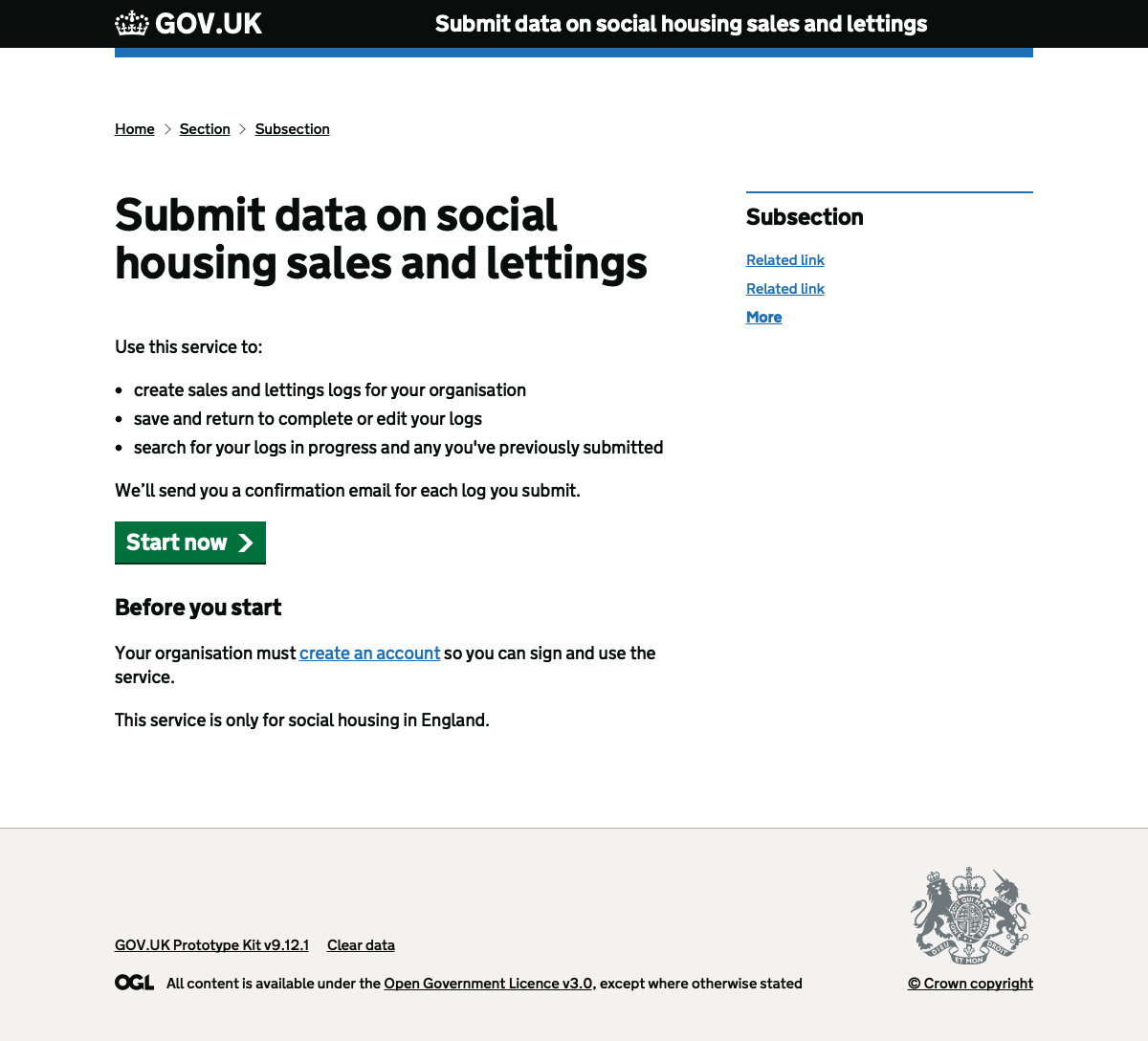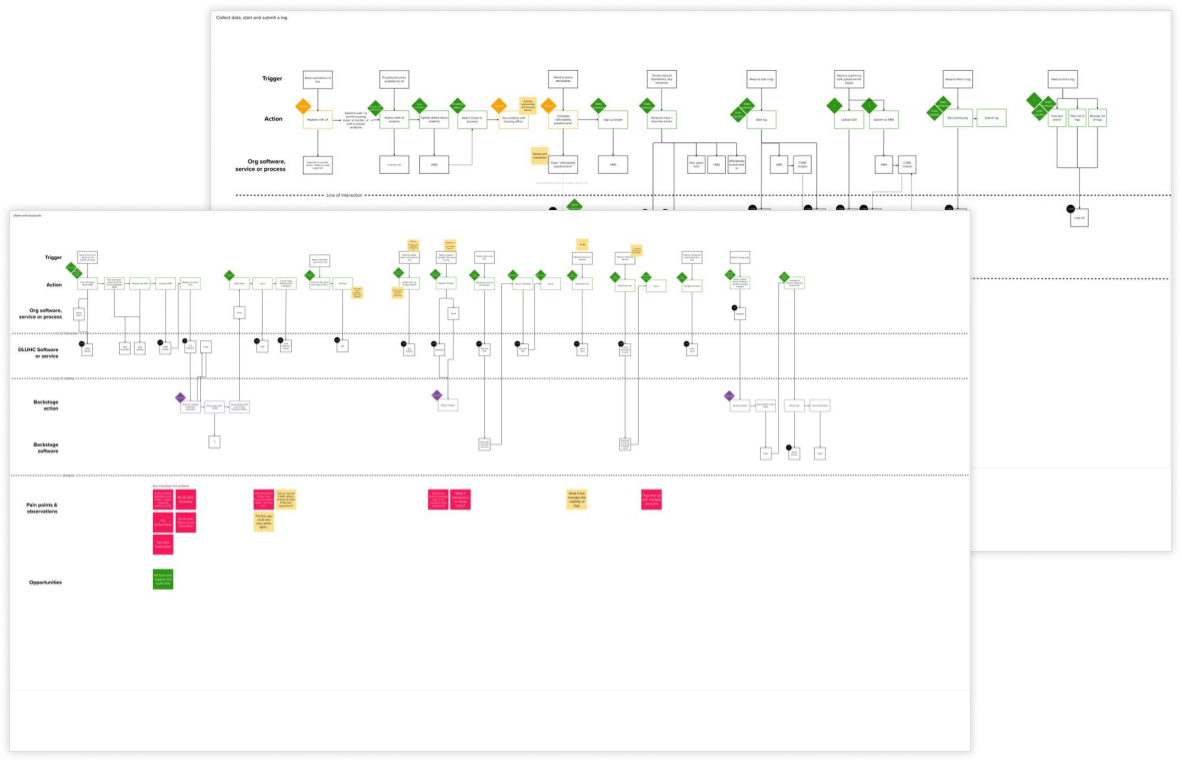Easier reporting of social housing data
Reducing the burden for busy housing officers when sharing vital data with central government.
There are millions of social housing properties in England. Whenever one is let or sold, the housing provider responsible has to submit a report (known as a log) to DLUHC. This is not a pain-free process, especially for busy housing officers who’d rather be finding homes for families.
Our mission was to make it easier and quicker for data providers to submit valid social housing sales and lettings data first time.
Rapid, agile design
When I joined the team, they had recently undergone an alpha assessment and had not met the service standard requirements. We needed to test and implement the best solution to this problem. Using the GOV.UK prototyping kit, I created a prototype and gathered user feedback to refine the design.
To further improve the submission process for housing logs, I implemented form design principles such as presenting one task per page and creating a clear starting point. I also developed the team’s ability to communicate the service process through detailed user journey maps.
I introduced a design history to document our decision-making process to ensure transparency and accountability. Just five weeks later, we were able to meet all the requirements for our alpha reassessment.
I joined the team shortly after their alpha assessment; unfortunately, they hadn’t met the requirements of the service standard. The team experimented with many hypotheses but none in-depth, so we needed to test their best solution idea quickly.

I built a prototype using the GOV.UK prototyping kit. This allowed us to test many different journies and iterate improvements rapidly. Prototyping in code also allowed us to improve the accessibility of the front end without having to build a back end.
I introduced form design concepts like one thing per page, a meaningful start page and a task list.
I then developed the team’s ability to communicate the service landscape by translating research into detailed user journey maps. This ensured we could better explain the end-to-end processes of submitting housing logs.
Finally, I introduced a design history, so we could record our decisions in the open.
Five weeks later, we met all the requirements for our alpha reassessment.
Asking better questions
The whole point of collecting data on social housing is so policymakers can make better policies. It’s the job of DLUHC’s Statistics Team to make meaning from data to help policymakers understand which policies work.
I started running “question co-design” sessions with the Statistics Team. After each workshop, we prototyped and tested the changes so we could make evidence-based decisions together at the next workshop.
By representing users in these sessions, we designed better questions that were more readily understood and collected the correct information. This led to better data overall. Win-win.
The co-design sessions were also brilliant for building rapport with the Statistics Team. They even started attending other research sessions and took an active role in synthesising the findings.
Later, the map also allowed us to bypass prototyping and test form changes directly in the service. This was possible because we’d tested our risky assumptions early and now could reliably ask easy-to-understand questions.
Solving a whole problem
Throughout my time on this project, my main focus was ensuring that we solved a whole problem for our users.

Using insights from user research, I mapped out activities such as “renting a property”, “doing admin”, or even “applying to be a housing provider”. I mapped out every journey we could think of related to social housing lettings and sales.
These maps allowed the team and stakeholders to consider where our service fit in users’ day-to-day lives and where we could have the most significant impact.
Jon brought critical leadership and service mapping skills to the team, and his deliverables consistently unlocked productivity for interaction designers, researchers and developers. He quickly built trust among stakeholders, was a thought partner for me as a product manager, and was a considerate, supportive and fun member of our multidisciplinary product team.Sona Hathi, Senior Product Manager, DLUHC
Outcomes
Less burdensome log submission
By introducing good form-design principals, routing around irrelevant questions and improving question content, we massively simplified submitting a single log.
Passed alpha and beta assessments
By focusing on the user and following GDS standards, we met all the service standard requirements for alpha and beta assessments.
Costs reduced by 50%
By reducing customer support costs, the new service is projected to halve the running costs of the legacy service.
Cover photo Photo by Jay Mullings.